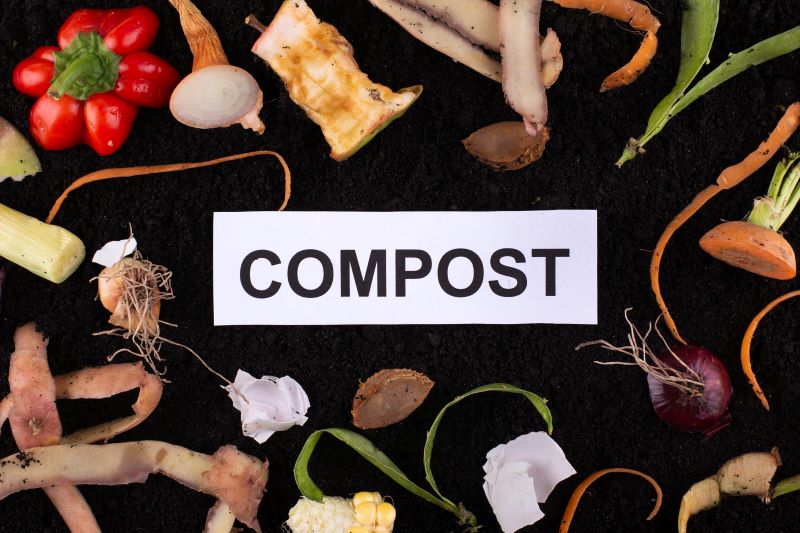
A Comprehensive Composting Guide: Understanding the Process and Benefits
What is Composting?
Composting is a natural process of decomposition where organic materials, such as food scraps, yard waste, and paper, are broken down by microorganisms into a nutrient-rich soil amendment called compost. This process is essential for creating a sustainable cycle of waste management and soil replenishment.
The decomposition process is facilitated by a variety of microorganisms, including bacteria, fungi, and insects, that feed on the organic materials. As these microorganisms break down the materials, they release nutrients that can be readily absorbed by plants, making compost an excellent natural fertilizer.
Compostable materials can include a wide range of organic matter, such as:
- Fruit and vegetable scraps
- Eggshells
- Coffee grounds and tea leaves
- Shredded paper and cardboard
- Yard trimmings (leaves, grass clippings, twigs)
- Manure from plant-eating animals
How Does Composting Work?
The composting process involves several key steps:
Microbial Decomposition
The first stage of composting is the breakdown of organic materials by microorganisms, such as bacteria and fungi. These microorganisms feed on the carbon and nitrogen-rich materials, converting them into carbon dioxide, water, and heat.
Aeration
Proper aeration is crucial for the composting process, as it provides oxygen for the microorganisms to thrive. Turning or mixing the compost pile regularly helps to distribute air throughout the materials, ensuring efficient decomposition.
Moisture Regulation
Maintaining the right moisture level is essential for the composting process. The compost pile should be moist, but not overly wet, as too much moisture can inhibit the microbial activity and lead to anaerobic conditions.
Temperature Regulation
As the microorganisms break down the organic materials, they generate heat, which can raise the temperature of the compost pile. Monitoring and managing the temperature is important to ensure that the composting process remains optimal.
Benefits of Composting
Composting offers a wide range of benefits, both for the environment and for individuals:
Environmental Benefits
- Reduces Greenhouse Gas Emissions: By diverting organic waste from landfills, composting helps to reduce the release of methane, a potent greenhouse gas.
- Conserves Water: Compost helps to improve soil structure, increasing its water-holding capacity and reducing the need for irrigation.
- Reduces Landfill Waste: Composting diverts a significant amount of organic waste from landfills, which can help to extend the lifespan of existing landfills.
Economic Benefits
- Saves Money on Fertilizers and Pesticides: Compost can be used as a natural fertilizer, reducing the need for synthetic and often expensive alternatives.
- Increases Crop Yields: The nutrient-rich compost can improve soil fertility, leading to healthier plants and higher crop yields.
- Supports Local Agriculture: Composting can help to create a closed-loop system, where organic waste is transformed into a valuable resource for local farmers and gardeners.
Social Benefits
- Promotes Community Engagement: Composting can be a collaborative effort, encouraging community members to work together towards a more sustainable future.
- Encourages Sustainable Living Practices: By engaging in composting, individuals can develop a greater appreciation for the environment and adopt more sustainable lifestyle choices.
Getting Started with Composting
Starting a composting routine can be a simple and rewarding process. There are several composting methods to choose from, depending on your available space and needs:
Backyard Composting
This is the most common method, where a composting bin or pile is set up in the backyard. Backyard composting is suitable for both urban and rural settings and can be easily maintained.
Vermicomposting (Worm Composting)
This method uses specialized worms, such as red wigglers, to break down organic materials. Vermicomposting can be done indoors or outdoors and is a great option for those with limited space.
Bokashi Composting
Bokashi composting is a two-stage process that involves the use of beneficial microorganisms to break down organic materials. This method is particularly useful for composting cooked foods and meat, which are typically not suitable for traditional composting.
When setting up a composting system, it’s essential to choose the right type of composting bin or container, ensure proper aeration and moisture levels, and regularly add a mix of “green” (nitrogen-rich) and “brown” (carbon-rich) materials.
Common Composting Mistakes to Avoid
While composting is a relatively straightforward process, there are some common mistakes that can hinder the efficiency of the system:
- Adding Too Many Contaminants: Avoid adding materials that are not compostable, such as plastics, metals, and treated wood, as they can disrupt the composting process.
- Not Maintaining Proper Moisture Levels: The compost pile should be moist but not waterlogged. Regularly check the moisture level and add water or dry materials as needed.
- Neglecting to Turn the Compost Pile: Turning the compost pile regularly helps to aerate the materials and ensure even decomposition.
- Failing to Monitor Temperature and pH Levels: Maintaining the optimal temperature (between 104°F and 140°F) and pH range (between 6.0 and 8.0) is crucial for the health of the microorganisms.
Advanced Composting Techniques
As you become more experienced with composting, you can explore advanced techniques to optimize the process and tailor it to your specific needs:
Hot Composting
Hot composting involves maintaining a high temperature (between 130°F and 160°F) in the compost pile, which can accelerate the decomposition process and kill more pathogens and weed seeds.
Cold Composting
Cold composting is a slower, more hands-off approach that relies on natural decomposition processes. This method is suitable for those with limited time or resources to devote to regular maintenance.
Vermicomposting
Vermicomposting, or worm composting, utilizes specialized worms, such as red wigglers, to break down organic materials. This method can be particularly effective for small-scale composting, as it can be done indoors or in a small outdoor space.
Bokashi Composting
Bokashi composting is a two-stage process that involves the use of beneficial microorganisms to break down organic materials, including cooked foods and meat, which are typically not suitable for traditional composting.
Conclusion: Why Composting is Essential for a Sustainable Future
Composting is a simple yet powerful tool in the quest for a more sustainable future. By diverting organic waste from landfills, composting helps to reduce greenhouse gas emissions, conserve water, and support local agriculture. Moreover, the process of composting can bring communities together, fostering a greater appreciation for the environment and sustainable living practices.
As you embark on your composting journey, remember that every small step towards a more sustainable lifestyle can have a significant impact. Start composting today and be a part of the solution for a greener, more resilient future.


